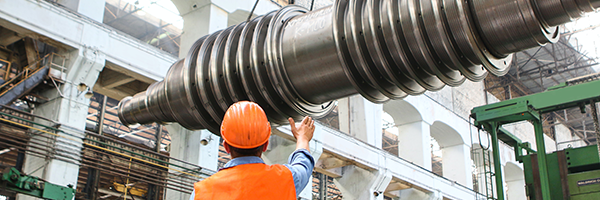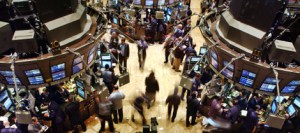JCI

February 11, 2025 | AGN, ALV, AMZN, AUY, BABA, BG, BGC, BHP, BMY, CHK, CMI, CNI, COH, CSCO, CX, Daily JAM, DD, DE, DHR, DXJR, EBAY, ENB, EUM, FB, FCX, FLR, FLS, FTV, GE, GLW, GOOG, HAIN, HDB, INCY, IONS, ITUB, JCI, JO, JOY, KMI, LFL, LNG, LUX, MGM, MIDD, MON, MPC, OGXI, OKS, PEP, PFXF, POT, PXD, QCOM, RSPP, RYN, SDRL, SFTBY, SH, SLB, SPWR, Videos |
Today’s video is Is Wall Street ready to write off 2025? I’m seeing a gradual move on Wall Street from “Trump doesn’t mean what he’s saying about tariffs and mass deportations” to “Maybe he is serious.” On Monday, Trump announced 25% tariffs on steel and aluminum with a starting date of March 4, on top of other tariffs already announced. You can see the shift in commentary from big banks like Bank of America and JP Morgan. These companies are now saying that things that will negatively affect growth are happening much more quickly than things that will support the stock prices. New tariffs and economic uncertainty, which has caused the Fed to refrain from cutting interest rates, are happening now and will be hitting the market. Tax cuts and deregulation, which could goose growth, will take longer to implement and we may not feel those positive effects until 2026 or later. Wall Street is basically saying that 2025 will be a year of negative risks, but 2026 may be more of an upside if tax cuts and deregulation do, indeed, happen.

February 6, 2025 | AAPL, ACAD, AGN, ALV, AMZN, AUY, BABA, BG, BGC, BHP, BMY, CHK, CMI, CNI, COH, CSCO, CX, Daily JAM, DD, DE, DHR, DXJR, EBAY, ENB, EUM, FB, FCX, FLR, FLS, FTV, GE, GLW, GOOG, HAIN, HDB, INCY, IONS, ITUB, JCI, JO, JOY, KMI, LFL, LNG, LUX, MGM, MIDD, MON, MPC, OGXI, OKS, PEP, PFXF, POT, PXD, QCOM, RSPP, RYN, SDRL, SFTBY, SH, Short Term, SLB, SPWR, Videos, Z-SYMBOLS |
Today’s video is the Fed is between a rock and a hard place. Inflation has been stuck around 2.8% and the Fed would like to get it down to 2%. In January, the Fed paused any movement on interest rates but Wall Street remained hopeful for two cuts in 2025. The March 19 meeting will include a dot plot that will outline whether or not the central bank is thinking about any cuts for 2025. The problem is the Fed doesn’t know where the economy is going. There are too many uncertainties surrounding constantly changing Trump tariffs as well as the expected tax cut bill (which will result in higher yields and a market and economic stimulus). The budget also remains an unanswered question. These uncertainties, with the Fed also under huge political pressure from the Trump administration to make interest rate cuts, catch the Fed between a rock and a hard place and we won’t know how the Fed plans to address its dilemma until March.

January 10, 2025 | AAPL, ACAD, ADSK, AGN, ALB, ALV, AMZN, ARCO, ARGT, AUY, BABA, BG, BGC, BHP, BMY, CHK, CMI, CNI, COH, CSCO, CTRP, CX, Daily JAM, DD, DE, DHR, DWDP, DXJR, EBAY, EEM, EFNL, ENB, EUM, EWZS, FANG, FANUY, FB, FCX, FEZ, FLR, FLS, FTV, GDXJ, GE, GGAL, GLD, GLW, GOOG, HAIN, HDB, HP, INCY, ING, IONS, ITUB, IVV, JCI, JO, JOY, KBWB, KMI, LFL, LNG, LUX, MGM, MIDD, MON, Morning Briefing, MPC, MXF, NJDCY, NKTR, OGXI, OKS, PEP, PFXF, POT, PXD, PYPL, QCOM, RSPP, RYN, SDRL, SFTBY, SH, SLB, SPWR, SQM, STO, SYNA, TCEHY, TPR, TRGP, TS, V, VALE, VEA, Videos, VMC, VZ, WBK, WES, XOM, XYL, YPF, Z-SYMBOLS |
In December U.S. economy in December added the most jobs since March and the unemployment rate unexpectedly fell. Nonfarm payrolls increased 256,000, exceeding all but one forecast in a Bloomberg survey of economists. The unemployment rate fell to 4.1%, while average hourly earnings rose 0.3% from November, a Bureau of Labor Statistics report showed Friday. For 2024 as a whole, the economy added 2.2 million jobs—-below the 3 million increase in 2023 but above the 2 million created in 2019. The data almost certainly assured that the Federal Reserve would not cut interest rates at its January 29 meeting. As of 11 a.m. New York time, the yield on the 10-year Treasury had climbed another 5 basis points to 4.74%.

January 9, 2025 | AAPL, ACAD, ADSK, AGN, ALB, ALV, AMZN, ARCO, ARGT, AUY, BABA, BG, BGC, BHP, BMY, CHK, CMI, CNI, COH, CSCO, CTRP, CX, DD, DE, DHR, DWDP, DXJR, EBAY, EEM, EFNL, ENB, EUM, EWZS, FANG, FANUY, FB, FCX, FEZ, FLR, FLS, FTV, GDXJ, GE, GGAL, GLD, GLW, GOOG, HAIN, HDB, HP, INCY, ING, IONS, ITUB, IVV, JCI, JO, JOY, KBWB, KMI, LFL, LNG, LUX, MGM, Mid Term, MIDD, MON, Morning Briefing, MPC, MXF, NJDCY, NKTR, Notes You Need, OGXI, OKS, PEP, Perfect Five-ETFs, PFXF, POT, PXD, PYPL, QCOM, RSPP, RYN, SDRL, SFTBY, SH, SLB, SPWR, SQM, STO, SYNA, TCEHY, TPR, TRGP, TS, V, VALE, VEA, Videos, VMC, VZ, WBK, WES, XOM, XYL, YPF, Z-SYMBOLS |
China’s consumer price index rose 0.1% in December from a year earlier, in line with the median forecast of economists surveyed by Bloomberg. Factory deflation extended into a 27th month, though the producer price index recorded a slower drop of 2.3%, the National Bureau of Statistics said Thursday. For the full year, consumer prices only inched up 0.2% from 2023, well short of the 1.1% gain economists had predicted at the beginning of 2024.

January 8, 2025 | AAPL, ACAD, ADSK, AGN, ALB, ALV, AMZN, ARCO, ARGT, AUY, BABA, BG, BGC, BHP, BMY, CHK, CMI, CNI, COH, CSCO, CTRP, CX, DD, DE, DHR, DWDP, DXJR, EBAY, EEM, EFNL, ENB, EUM, EWZS, FANG, FANUY, FB, FCX, FEZ, FLR, FLS, FTV, GDXJ, GE, GGAL, GLD, GLW, GOOG, HAIN, HDB, HP, INCY, ING, IONS, ITUB, IVV, JCI, JO, JOY, KBWB, KMI, LFL, LNG, LUX, MGM, MIDD, MON, Morning Briefing, MPC, MXF, NJDCY, NKTR, Notes You Need, OGXI, OKS, PEP, PFXF, POT, PXD, PYPL, QCOM, RSPP, RYN, SDRL, SFTBY, SH, Short Term, SLB, SPWR, SQM, STO, SYNA, TCEHY, TPR, TRGP, TS, V, VALE, VEA, Videos, VMC, VZ, WBK, WES, XOM, XYL, YPF, Z-SYMBOLS |
In minutes from the Federal Reserve’s December 17-18 meeting released on Wednesday, January 8, Federal Reserve officials clearly decided to move more slowly on cutting interest rates in the quarters ahead. “Participants indicated that the committee was at or near the point at which it would be appropriate to slow the pace of policy easing,” minutes from the Federal Open Market Committee showed. “Many participants suggested that a variety of factors underlined the need for a careful approach to monetary policy decisions over coming quarters.” Please note the reference to “quarters” and not “months.”

January 8, 2025 | AAPL, ACAD, ADSK, AGN, ALB, ALV, AMZN, ARCO, ARGT, AUY, BABA, BG, BGC, BHP, BMY, CHK, CMI, CNI, COH, CSCO, CTRP, CX, DD, DE, DHR, DWDP, DXJR, EBAY, EEM, EFNL, ENB, EUM, EWZS, FANG, FANUY, FB, FCX, FEZ, FLR, FLS, FTV, GDXJ, GE, GGAL, GLD, GLW, GOOG, HAIN, HDB, HP, INCY, ING, IONS, ITUB, IVV, JCI, JO, JOY, KBWB, KMI, LFL, LNG, LUX, MGM, MIDD, MON, Morning Briefing, MPC, MXF, NJDCY, NKTR, Notes You Need, OGXI, OKS, PEP, Perfect Five-ETFs, PFXF, POT, PXD, PYPL, QCOM, RSPP, RYN, SDRL, SFTBY, SH, Short Term, SLB, SPWR, SQM, STO, SYNA, TCEHY, TPR, TRGP, TS, V, VALE, VEA, Videos, VMC, VZ, WBK, WES, XOM, XYL, YPF, Z-SYMBOLS |
The 20-year Treasury bond, a laggard on the government debt curve since its re-introduction in 2020, topped 5% Wednesday for the first time since 2023. The move looks to be fueled by concern that President-elect Donald Trump’s policies on tariffs and tax cuts will lead to wider deficits and rekindle inflation.

January 7, 2025 | AAPL, ACAD, ADSK, AGN, ALB, ALV, AMZN, ARCO, ARGT, AUY, BABA, BG, BGC, BHP, BMY, CHK, CMI, CNI, COH, CSCO, CTRP, CX, Daily JAM, DD, DE, DHR, DWDP, DXJR, EBAY, EEM, EFNL, ENB, EUM, EWZS, FANG, FANUY, FB, FCX, FEZ, FLR, FLS, FTV, GDXJ, GE, GGAL, GLD, GLW, GOOG, HAIN, HDB, HP, INCY, ING, IONS, ITUB, IVV, JCI, JO, JOY, KBWB, KMI, LFL, LNG, LUX, MGM, Mid Term, MIDD, MON, Morning Briefing, MPC, MXF, NJDCY, NKTR, OGXI, OKS, PEP, PFXF, POT, PXD, PYPL, QCOM, RSPP, RYN, SDRL, SFTBY, SH, SLB, SPWR, SQM, STO, SYNA, TCEHY, TPR, TRGP, TS, V, VALE, VEA, Videos, VMC, VZ, WBK, WES, XOM, XYL, YPF, Z-SYMBOLS |
The Institute for Supply Management’s index of services advanced 2 points to 54.1 last month. That show of strength in the economy–readings above 50 indicate expansion–was enough to push stocks lower as the markets began to price in a delay in the next interest rate cut from the Federal Reserve until July The measure of prices paid for materials and services rose more than 6 points to 64.4, suggesting that the drop in the inflation rate in the service sector–about 70% of the U.S. economy–might be over.

June 14, 2023 | ADBE, ALB, AMAT, CMI, Daily JAM, Dividend Income, GOOG, JCI, Jubak Picks, Long Term, MSFT, NVDA, SCCO, Top 50 Stocks |
I think a well-constructed portfolio should resemble an onion. (Yes, to continue the analogy, it may make you cry in the short term, but the end result after cooking time is yummy.) At the center of that onion is a core built of stocks with extremely high, risk-adjusted potential rates of return. These stocks won’t deliver the kind of huge gains you can reap from investing in a risky bet–if everything turns out right for that company and its stock. But neither are they likely to crash and burn because something goes wrong at the company. These core portfolio stocks will drop if the market as a whole heads south, but they will drop less and recover faster. These aren’t buy-and-forget, or hold-forever stocks. They can soar to unreasonable valuations at times and an active investor should take profits at some point of overvaluation. (I did a YouTube video recently (you can find it on any of my sites) on when to sell a very overvalued Nvidia, for example.) And they can trade at big discounts to fair value (which is, of course, when the steely-eyed among us will buy) because management has made a mistake or between the industry in which they do business is slumping, or because the market for the company’s goods and services has taken an unexpected direction. At that point, you’ll need to consider selling or adding to your positions depending on your analysis of how long the damage might last and how bad it is. But the point of this core to your stock portfolio is that these are companies that will deliver index-beating results with relatively small risks. Which will enable you, the investor, to plan how to achieve your financial goals with relatively less worry and uncertainty. So, without further ado, here’s my list of 10 stocks for a core portfolio–with the very important “whys” for each pick.

May 2, 2022 | CMI, Daily JAM, DNNGY, ES, FQVLF, JCI, LICY, Long Term, SCCO, Special Reports, Top 50 Stocks |
All you have to do to find the high profits that will make the risk of investing in climate change stocks worthwhile is to focus on sectors (1) where the rewards are solid and the risk is quantifiable, (2) where companies are making profit the old-fashioned way by building out networks and then charging high rents to use them, by (3) carefully targeting a few technologies (wind and solar and hydrogen and electric cars) that will be part of any mix of solutions, and (4) by investing in bottlenecks that are likely to drive prices up (and provide good profits for companies that resolve the bottleneck.

December 8, 2021 | Daily JAM, JCI, Long Term, Stock Alerts, Top 50 Stocks |
Johnson Controls International (JCI) raised its quarterly dividend to 34 cents a share, a 26% increase, effective with the dividend payment payable on January 14, 2022. (The record date for owning the shares in order to collect the dividend is December 20, 2021.)

January 8, 2020 | Daily JAM, JCI |
Special Report: 12 Bargain Stock Picks NOW. Pick #9 I haven't forgotten that I promised 12 bargain picks in this special report. I've got the rest identified and if geopolitics will just slow down for a bit, I'll get them all up. # 9 Johnson Controls International...

November 6, 2017 | Daily JAM, JCI, Stock Alerts |
Johnson Controls, a member of my long-term 50 Stocks portfolio, hasn’t done much of anything for a year now. Over the last 12 months the shares are up just 0.66%. That performance isn’t surprising. The company just about completely remade itself in 2016 by spinning off its automotive interiors business and by merger with Ireland-based Tyco International in what has been called one of the most egregious examples of corporate tax avoidance since Constantine outsourced the Roman Empire to Byzantium. Frankly I don’t think investors have known what to do with the “new” company–and the bad taste left by the 2016 tax inversion ploy and the company’s continued problems in generating cash have given investors very few reasons to put in the homework necessary to figure it out. But I think Johnson Controls deserves a little bit of attention now















